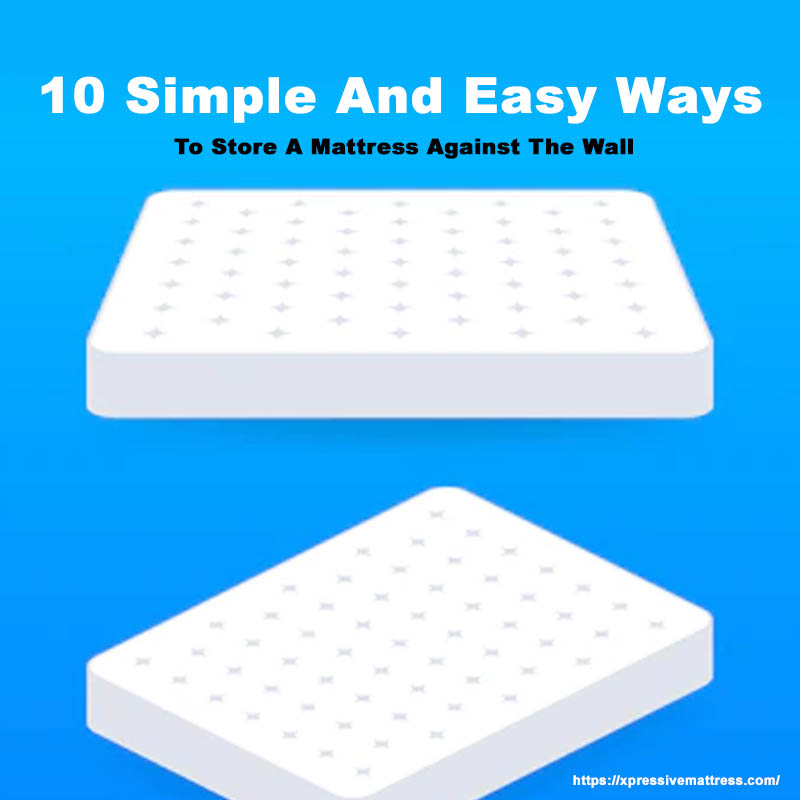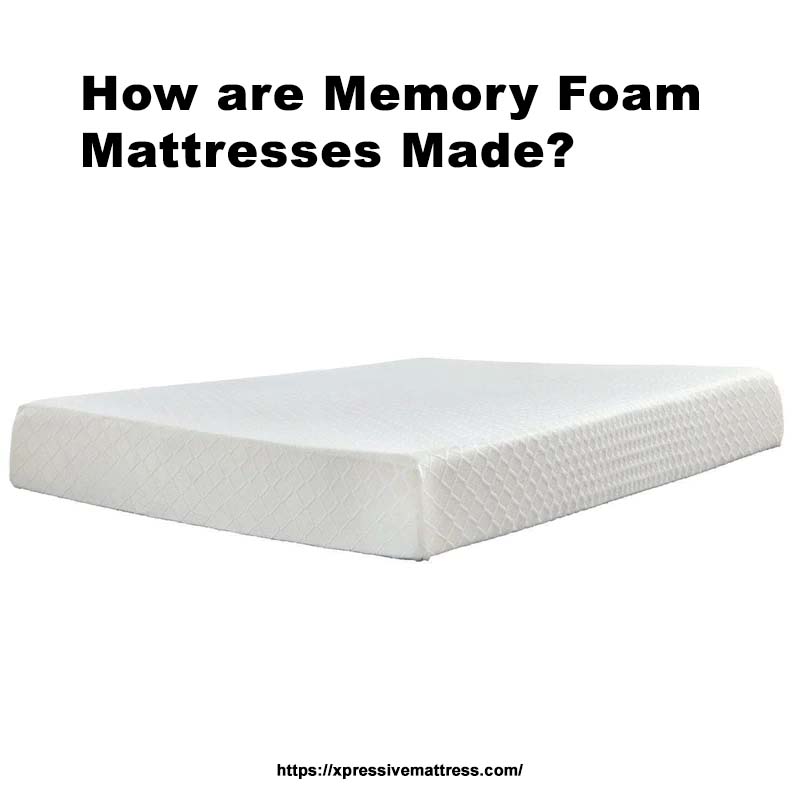Trimming a foam mattress is an easy and cost-effective way to customize your sleeping experience.
It can help you get the perfect fit for any bed frame and provide extra support.
Plus, it’s simple enough that anyone with basic DIY skills can do it! Here are some tips on how to trim a foam mattress:
- Measure twice – ensure accurate measurements of both the bed frame and the mattress before cutting.
- Use sharp scissors or an electric knife to ensure clean cuts without damaging the material.
- Cut slowly – take your time making each cut so that everything lines up perfectly.
- Add padding if necessary – use additional layers of cushioning, such as memory foam or latex, in areas needing more comfort/support.
Trimming a foam mattress should be relatively straightforward. And result in improved sleep quality too!
What Tools Are Needed To Trim Foam Mattress?
Trimming a foam mattress requires some basic tools.
These include an electric carving knife, scissors or shears, measuring tape, and a marker pen.
An electric carving knife is the best tool for cutting through thick layers of foam quickly and accurately.
It also helps to create smooth edges on your cut pieces.
Scissors or shears are useful when making smaller cuts in thinner sections of the mattress material.
They can be used with precision but may take longer than an electric carver if lots of trimming is involved!
Measuring tape will help ensure that all measurements taken during the process are accurate.
At the same time, a marker pen allows you to mark out where each piece should go before making any actual cuts
this makes sure everything fits together perfectly once finished!
Finally, safety goggles must always be worn with sharp objects like knives and protective gloves that protect hands from getting injured by blades slicing into them accidentally.
How To Measure The Correct Size For Trimming?
Measuring the correct size for trimming is an important step in any project.
Here are some tips to help you get it right:
- Measure twice, cut once! Take your time and measure carefully before cutting anything.
- This will save you from starting over if something doesn’t fit correctly.
- Use a measuring tape or ruler when possible – these tools provide more accurate measurements than just using your eyes alone!
- Consider the type of material being trimmed – different materials require different methods of measurement (e.g., the fabric may need to be measured differently than wood).
- Think about how much extra space needs to be added around each edge that’s going to be trimmed – usually 1/8″-¼” should do the trick but check with instructions specific for whatever material is being used first as they might have their own recommendations on what works best for them specifically.
- Use pencils, markers, or chalk depending on the surface area needing to be marked off. Make sure marks can easily be seen by anyone working near them afterward, too! Mark where cuts need to be made clear so there won’t be any confusion later down the line during the installation process.
Steps To Safely Cut Foam Mattress
Cutting a foam mattress can be tricky, but it is possible with the right tools and safety precautions.
Here are some steps to safely cut your foam mattress:
- Gather all necessary materials – You will need an electric carving knife or sharp utility blade, measuring tape/ruler, masking tape (optional), and a straight edge guide (optional).
- Measure twice – Before cutting, ensure that you have measured correctly so that everything fits together properly when finished!
- Securely hold down the material – Make sure to firmly press down on the area where you plan on making cuts for them to come out clean and precise without any jagged edges or uneven lines.
- This also helps prevent accidents from happening while using power tools like knives.
- Wear protective gear – Safety glasses should always be worn during this process, and gloves if needed depending on the tool used.
- These items help protect against potential injury from flying debris created by slicing through dense material, such as memory foam mattresses containing small particles inside their core layers.
- Use slow, steady strokes – When cutting into thick pieces, use slower, more controlled movements instead of quick, jerky ones because they tend not to produce cleaner results overall plus, reduce chances for mistakes occurring a long way too ! 6 Clean up afterward- After completing the task take time to wipe off excess dust residue left behind before storing away newly trimmed piece(s) back its original place until ready again later date.
How To Smooth The Edges After Trimming?
Trimming the edges of a project can be tricky.
Here are some tips to help you get smooth, professional-looking results:
- Use sharp scissors or shears – dull blades will leave jagged edges that won’t look neat.
- Cut slowly and carefully – take your time to avoid making any mistakes.
- Make sure all pieces fit together properly before trimming them down – this way, you’ll know exactly how much needs cutting off for everything to line up correctly.
- Use an electric trimmer with adjustable settings – it’s easier than manual tools like scissors or knives. It gives more precise control over the amount being trimmed away each time.
- After trimming, sandpaper is often used on wood projects to create smoother surfaces by removing small amounts of material from high points until they’re level with lower ones (this process is called “sanding”).
- Try running a hot iron along the edge after trimming for fabric items such as curtains or clothing. This helps seal frayed threads into place while giving a nice finished appearance!
Tips For Trimming Foam Mattress Without Damaging It
Trimming a foam mattress can be tricky, but it doesn’t have to be.
Here are some tips for trimming your foam mattress without damaging it:
- Measure the area you want to cut and mark it with chalk or tape.
- This will help ensure accuracy when cutting.
- Use an electric carving knife or sharp utility blade for the best results.
- Avoid using scissors, as they may not provide a clean edge on thicker mattresses.
- Make sure that the surface is flat before beginning any cuts so that there won’t be uneven edges after completed trimming.
- Use sandpaper to achieve desired surface smoothness before cutting into the material.
- Cut slowly and carefully along marked lines while applying even pressure throughout the entire process – do NOT rush! This will prevent accidental slips, which could result in unintentional damage during operation.
- Finally, seal all exposed edges with waterproof adhesive once finished. This helps protect against moisture seeping through seams over time, thus significantly extending the product’s life span!
Importance Of Using A Sharp Blade
Using a sharp blade is very important for many reasons.
- It ensures safety. When cutting with a dull knife, you must apply more pressure, increasing the risk of slipping and causing an injury.
- Using a sharp blade makes your job easier as less effort is required to cut through something – tasks can be completed quicker!
- Sharper edges are much better at precision work, such as carving or filleting fish. They make cleaner cuts, so there’s no need for extra sanding afterward.
- Good quality knives will last longer than cheaper ones because their edges stay sharper for longer. That’s due to higher-grade materials being used during production.
Here are some tips on how best to use sharpeners:
- Always read instructions before starting any task involving tools like these.
- Make sure all parts fit together correctly and securely.
- Use light strokes while honing/sharpening the edge.
- Test out the new edge by slicing paper or other soft material
- In conclusion, using high-quality blades saves time and keeps us safe from accidents caused by blunt objects!
Options For Cleaning Up After Trimming Foam Mattress
When trimming a foam mattress, it is important to clean it up afterward.
There are several options for vacuuming the area with an attachment designed specifically for mattresses.
Using a damp cloth or sponge and mild detergent to wipe down any exposed surfaces.
Spot cleaning with baking soda mixed into the water if there are stubborn stains that won’t come out easily.
And finally, airing out the room by opening windows or running fans to remove dust particles from the air.
It’s also helpful to use protective gloves when handling foam pieces, as they can be sharp!
Additionally, disposing of trimmings properly is essential – either through recycling centers where available or simply throwing them away in sealed bags.
Finally, make sure all tools used during cutting have been cleaned thoroughly before putting them back into storage!
Conclusion: How To Trim Foam Mattress?
In conclusion, trimming a foam mattress is an easy and cost-effective way to customize your sleeping experience.
It can be done with simple tools like scissors or electric knives and specialized equipment such as hot wire cutters.
The process involves measuring the desired size of the new mattress before cutting it down to fit perfectly in its intended space.
Trimming also helps reduce motion transfer between sleepers on either side of the bed for better restful nights!
This one DIY project that anyone should try at least once – you won’t regret it!



